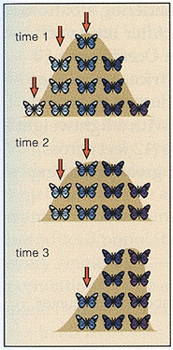 | 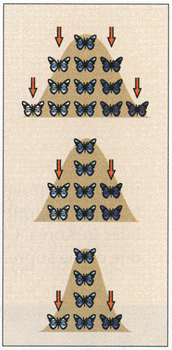 |
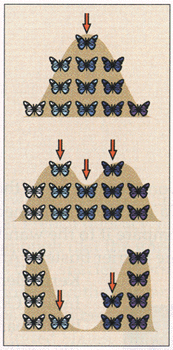 |
| Directional selection | Stabilizing selection | Disruptive selection |
5. Selection
Types of selection:
 |  |
 |
| Directional selection | Stabilizing selection | Disruptive selection |
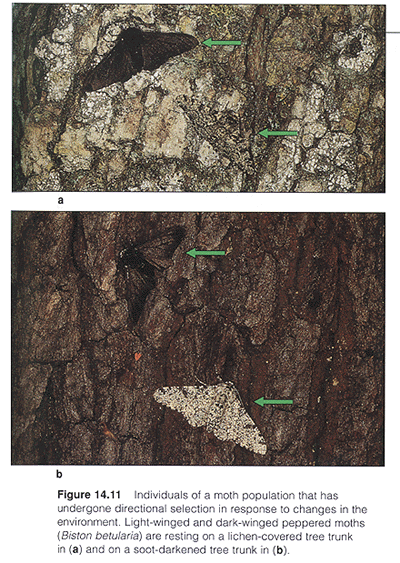 | 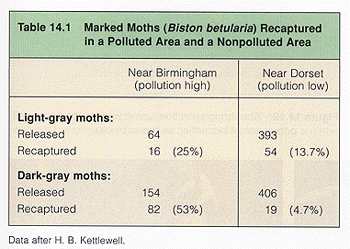 |
2. Evolution of pesticide and antibiotic resistance
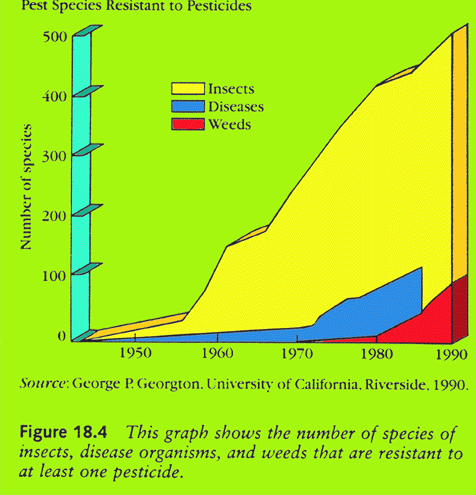

Agrostis tenuis growing on a copper mine in Britain.
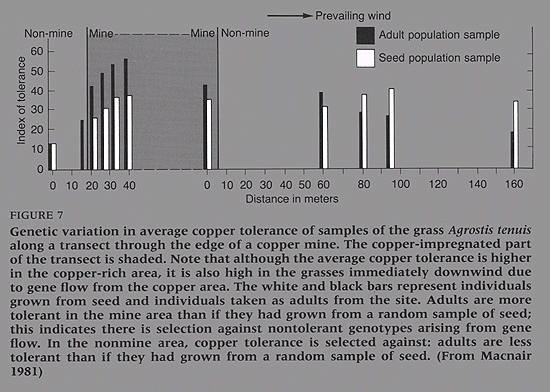
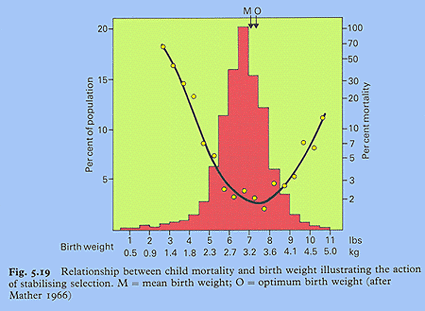

Selection for small or large body size in the guppies (Poecilia reticulata) in Trinidad.

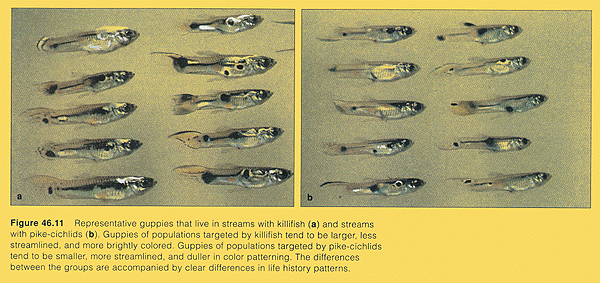
Maintenance of high frequencies of harmful or deleterious alleles is usually due to balancing selection through heterozygote advantage (i.e. heterozygotes have the highest relative fitness).
.
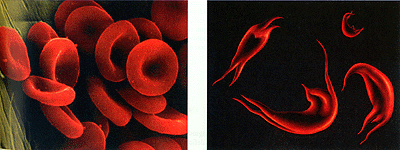
Red blood cells of a normal (left), and a sickle-celled person (right). In homozygotes, the irregular-shaped cells cause severe circulatory problems by clogging the small arteries and capillaries.
 |  |

Sickle-cell anaemia is the result of a single base substitution (mutation) in the beta haemoglobin gene. This mutation leads to a change in the amino-acid sequence in the hemoglobin molecule (from glutamine to valine). Since valine carries an apolar side group, this part of the molecule is less soluble in water, and stretches out making the red blood cells elongated and rigid.
sexual selection: differences in mating opportunity among individuals due to male contest and female choice.
Fact: Sexual selection results in dimorphism (pronounced phenotypic differences) between the sexes in many instances.
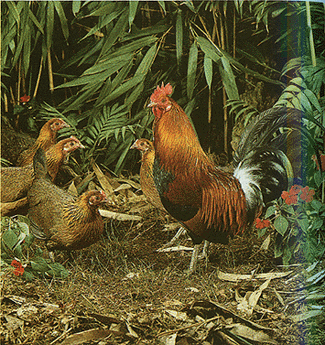 |  |
| | |
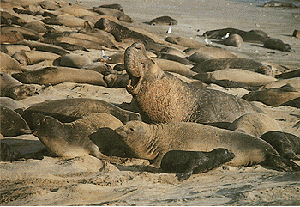 | 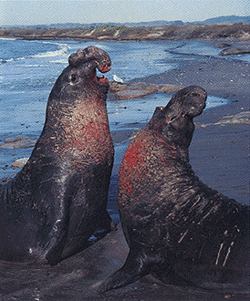 |
Why are females so choosy? Several hypotheses have been put forward:
1./ females have some innate preference toward more ornamented or colorful males, i.e. they just happen to be choosy (Fisher's runaway hypothesis)
2./ females choose males that carry superior genes (the "good genes" hypothesis)
3./ females choose males that are healthier (the Hamilton-Zuk hypothesis)
4./ females prefer ornamented or colorful males because their male offspring will be attractive again leading eventually to higher fitness (the "sexy son" hypothesis)
For all of the above hypotheses except No.1. additional hypotheses are necessary. For example, ornaments or colorful display indicates a male's genetic superiority for survival and future reproduction (ad. 2./), or they may indicate the health condition of males (ad. 3./), etc. The theory of sexual selection is a prime example of the 'scientific method' in action, demonstrating how alternative hypotheses are generated, tested and refined.
Some experimental tests of the hypotheses: